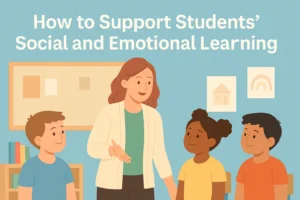The Future of STEAM Careers in the United States
The United States is on the cusp of a significant transformation, with an escalating demand for adept professionals within the STEAM disciplines. The Bureau of Labor Statistics forecasts a remarkable 10.8% expansion in STEM roles, encompassing life and physical sciences, by 2032, a trajectory significantly outpacing non-STEM fields1. Concurrently, the nation’s educational framework confronts the challenge of bridging a widening STEM proficiency gap, with U.S. students ranking 28th in mathematics and 13th in science on the Programme for International Student Assessment (PISA) exam1. This disparity threatens to undermine the nation’s competitiveness in a global marketplace, potentially stifling economic expansion over the long term.
Addressing this STEM skills deficit necessitates a concerted effort to cultivate interest in STEAM subjects from an early educational stage. The imperative for a strategic alignment of STEAM programs, encompassing non-profits, corporate ventures, and governmental initiatives, emerges as a pivotal strategy to enhance scalability and accessibility1. By dedicating resources to STEAM education and establishing clear career pathways, the United States can assert its dominance in the realms of innovation and technological progress.
Key Takeaways
- STEM occupations in the United States are projected to grow by 10.8% by 2032, more than four times faster than non-STEM occupations.
- The U.S. ranks behind other economically advanced nations in math and science proficiency, with a 13-point drop in math results on the 2022 PISA exam compared to 2018.
- There is a call for systematic investment in STEAM programs to better connect nonprofits, corporate initiatives, and government programs for improved scalability.
- Investing in STEAM education and creating pathways for students to pursue these in-demand careers can help the U.S. become a global leader in innovation and technological advancement.
- The future of STEAM careers in the United States is promising, but requires a focused effort to address the STEM proficiency gap and build a skilled workforce for the digital economy.
STEAM Education: Preparing Students for Emerging Careers
The landscape of STEM is undergoing a transformative shift, with a heightened focus on integrating the arts to form a comprehensive STEAM (Science, Technology, Engineering, Arts, and Mathematics) educational framework. This paradigm shift acknowledges the pivotal role of creativity, innovation, collaboration, and communication in propelling progress and equipping students for the forthcoming occupational landscape2.
Integrating Arts with STEM Disciplines
The amalgamation of arts with STEM disciplines transcends mere aesthetic enhancement; it represents a strategic endeavor aimed at enriching students’ comprehension of scientific principles and arming them with the adaptability, problem-solving acumen, and interpersonal skills sought by employers2. Georgette Yakman’s contribution to the expansion of STEM to STEAM underscores the indispensable role of arts within this domain, emphasizing their synergy for innovation2. The Rhode Island School of Design further elucidates the criticality of arts-STEM integration, highlighting their mutual reinforcement for innovation2.
Building 21st Century Skills for Innovation
STEAM education is dedicated to cultivating students with the 21st century competencies that are in high demand. By nurturing creativity, innovation, collaboration, and communication, STEAM education equips students with the versatile mindset and broad skillset requisite for excelling in the future’s occupational landscape2. The U.S. Bureau of Labor Statistics projects an 8% growth in STEM and STEAM-related occupations by 2029, outpacing the 3.4% growth for non-STEM occupations2. Furthermore, STEM and STEAM graduates are pivotal in addressing societal challenges such as the COVID-19 public health crisis2.
| Metric | Statistic |
|---|---|
| Median annual wages for STEM/STEAM jobs | $86,9802 |
| Median annual wages for all occupations | $39,8102 |
| Percentage of STEM college students who decided to study STEM in high school or earlier | 78%2 |
| Percentage of STEM college students who decided to study STEM in middle school or earlier | 21%2 |
| Percentage of STEM college students who feel their K-12 education prepared them extremely well for college STEM courses | Only 20%2 |
The STEAM landscape is dynamically evolving, with a burgeoning demand for a diverse array of STEAM-related careers3. Emerging fields include AI researchers and scientists, lawyers with expertise in AI regulative policies, machine learning engineers, data analysts, AI Engineers, Robotic Engineers, AI Ethicists, Language Processing Engineers, and AI Consultants3. To position students for these lucrative STEAM roles, fostering their engagement in STEAM clubs, robotics teams, coding clubs, or science fairs is profoundly advantageous3.
“STEAM education aims to deepen students’ understanding of scientific concepts and prepare them with the flexibility, collaboration, and communication skills needed for the jobs of the future.”
Exciting STEAM Career Opportunities
The United States is witnessing a marked increase in the demand for adept professionals within the STEAM (Science, Technology, Engineering, Arts, and Mathematics) disciplines4. The U.S. Bureau of Labor Statistics forecasts a significant growth in STEM occupations, such as data scientists, information security analysts, statisticians, web developers, and software developers, over the next decade4. These STEAM careers not only promise lucrative salaries and robust job prospects but also enable individuals to significantly impact fields like data analysis, cybersecurity, robotics, biotechnology, and green energy5.
It is imperative to prepare students for these burgeoning STEAM job opportunities to ensure the future competitiveness of the U.S. workforce6. In 2016, the Massachusetts Department of Elementary and Secondary Education pinpointed STEM career profiles as the most in-demand, aligning with the contemporary societal needs6. Furthermore, the Organization for Economic Cooperation and Development (OECD) anticipates that by 2030, numerous jobs will vanish, replaced by roles directly or indirectly linked to STEM fields6.
To galvanize the next generation of STEAM innovators, it is vital to showcase the myriad career paths available and the potential for job fulfillment, financial stability, and adaptability5. STEAM education equips professionals with high job satisfaction and flexibility, enabling them to thrive in various sectors, including government, nonprofits, major corporations, or startups, with prospects for global travel and remote work5. Additionally, STEAM careers are characterized by competitive remuneration, benefits, and retirement packages, stemming from the acute demand for skilled professionals in these domains5.
By igniting a passion for STEAM and unveiling the myriad career opportunities, we can empower students to delve into these dynamic and fulfilling fields, thereby contributing to the future advancement and innovation of the United States4. The statistics underscore a concerted effort to alter the perception of STEM careers and encourage future generations to delve into the extensive opportunities within STEM industries4. The significance of diversity within the STEM sector is underscored to inspire students and generate enthusiasm for potential STEAM careers4.
Classroom Explorations for STEAM Career Readiness
To ignite students’ enthusiasm for STEAM career exploration, educators can incorporate various hands-on learning experiences in the classroom7. These engaging activities, from designing prototypes to building the perfect playlist, can help students develop the essential 21st-century skills needed for success in dynamic, innovative STEAM fields8.
Classroom Job Simulations
By taking on different STEAM roles in group projects, students can gain first-hand experience with the responsibilities and challenges associated with various careers7. These immersive job simulations, which align with common career technical core standards, help students cultivate critical thinking, collaboration, and problem-solving abilities7.
Research and Presentation Projects
Encouraging students to research and present on specific STEAM careers can broaden their awareness of the diverse pathways available8. From designing innovative solutions as an engineer to driving digital animation as a creative professional, these project-based learning experiences allow students to explore their interests and passion areas8.
Community and Industry Partnerships
Establishing connections with local STEAM professionals and companies can provide students with invaluable real-world experiences8. Through guest speaker sessions, workplace visits, and collaborative projects, students can gain insights into the evolving nature of STEM jobs and the skills needed to thrive in these dynamic fields8. By fostering these community and industry partnerships, schools can better prepare students for the exciting STEAM career opportunities that await them9.
| Type of STEM Jobs | Description |
|---|---|
| Service | STEM jobs that aim to serve others, such as those in medical fields, animal care, environmental sustainability, and conservation. |
| Creation | Jobs that focus on creativity, such as designers, engineers, and app developers, requiring innovative thinking and problem-solving skills. |
| Innovation | Engaging in an innovator’s mindset to solve problems and design solutions, preparing students for jobs in engineering and design. |
“Fueling students’ STEM thinking by promoting a wide range of careers can help identify their interests and passion areas.”8
The Future of STEAM Careers in the United States
The United States is at the forefront of a technological evolution, underscoring the critical importance of STEAM (Science, Technology, Engineering, Arts, and Mathematics) careers. The U.S. Bureau of Labor Statistics projects a 10.8% increase in STEAM occupations by 2032, a figure that eclipses the growth of non-STEAM fields10. This trend highlights the pivotal role that STEAM professionals will play in propelling the nation’s economic advancement and maintaining its competitive edge on the global stage.
Education institutions, such as Sacred Heart University, are at the forefront of addressing this need by equipping educators with the requisite skills for STEAM learning. Their pioneering sixth-year degree in STEAM is the first of its kind in Connecticut, specifically designed to prepare educators for careers within STEAM disciplines and beyond10. This program is tailored for certified K-12 educators, aiming to bolster their interdisciplinary teaching capabilities in STEAM subjects. Such subjects are increasingly valued for their role in fostering critical thinking, delivering high-quality instruction, and promoting social-emotional learning10.
The escalating demand for STEAM-skilled professionals necessitates a concerted effort in educational reform and the forging of public-private partnerships. By investing in STEAM education and fostering robust connections between educational institutions and industry, the United States can ensure a steady supply of students inclined towards STEAM subjects. These students will be equipped with practical learning experiences, setting them up for success in the employment landscape of tomorrow11. Through such collaborative endeavors, the future of STEAM careers in the United States is poised to be more vibrant, heralding new opportunitie for economic expansion, workforce development, and innovation.
Visit our Blog for more



